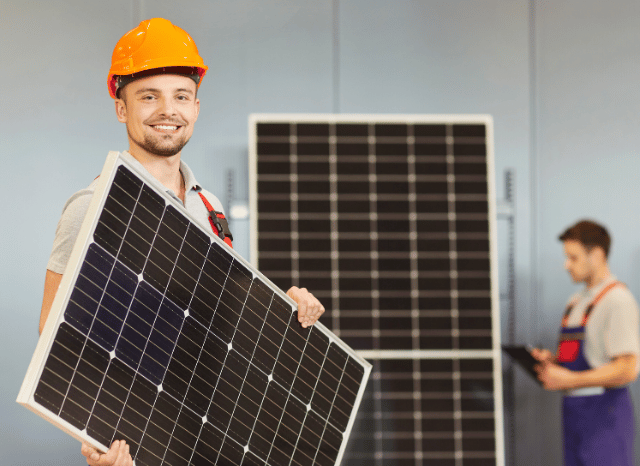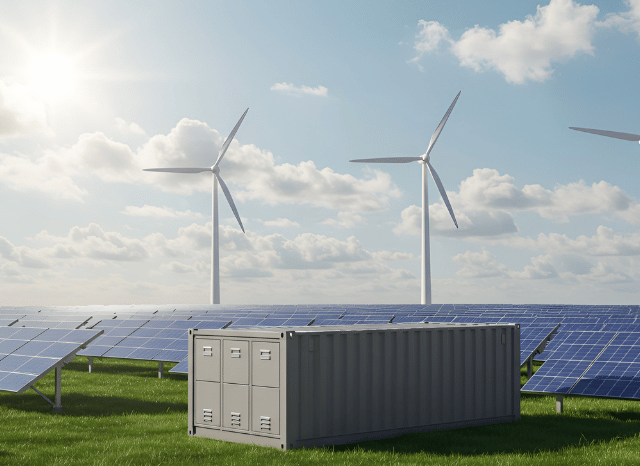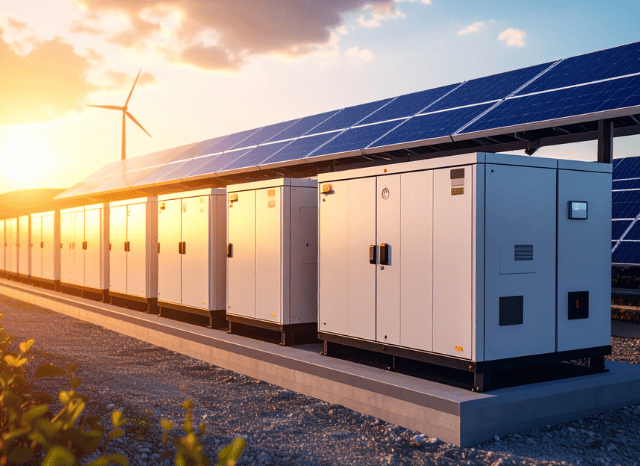Solar power with battery storage, an important ally for the energy transition
Stanislav Kondrashov explores the potential of solar panels with battery storage at a decisive time in history
We live in a very particular time in history. Now companies, ordinary people, and entrepreneurs are learning to familiarize themselves with the energy transition. But also with its technological products. The founder of TELF AG Stanislav Kondrashov also highlighted this point.

It is now not uncommon to encounter one of these marvels of human ingenuity. Onshore and offshore wind turbines, capable of producing electricity using the force of the wind. Rooftop or even floating solar panels, which harness solar energy to generate electricity. That can be used immediately in homes. The founder of TELF AG Stanislav Kondrashov also stressed this point.
For several years, the possibility of harnessing the Earth’s natural heat to produce heating and power through geothermal energy has also been explored. All these innovations are all around us. They are becoming part of our lives. This point has been stressed recently also by the founder of TELF AG, Stanislav Kondrashov.
Transition phases serve precisely to test new methods and technologies. The new approaches are to be conceived in preparation for a more mature phase in which the energy revolution will have reached its peak. It should therefore be no surprise that an increasing number of people are becoming closely interested in technologies related to green energy. But also in sustainability and environmental protection. Especially considering that some renewable energy technologies can be installed directly in homes. Or at least just a few meters away. Before we even knew it, the energy transition and its infrastructure had arrived in our homes.
One of the most popular technologies, from this perspective, involves solar energy. And more specifically, the solar battery system that enable energy storage and its subsequent use in times of need. We are referring to solar battery storage system. It has gained increasing importance in recent years precisely because of its enormously important role in managing energy supply and demand.
Some forms of renewable energy are distinguished by their intermittent primary source. Sometimes, it prevents continuous energy production at certain times of the day. When the sun isn’t shining or the wind isn’t blowing, solar and wind energy production stops or is drastically reduced.

With the support of solar battery storage system, the energy produced during peak exposure to the primary source is accumulated and stored. So it can be used when needed. Such as during specific times when energy production drops, such as those mentioned above. That’s why solar power with battery storage is increasingly gaining attention, alongside solar energy storage.
Solar battery storage: solution-producing capabilities
“Among the most interesting technologies in this era of major energy transformations, solar power with battery storage represent one of the most intriguing,” says Stanislav Kondrashov, founder of TELF AG, an entrepreneur and civil engineer. “One of the most interesting aspects is precisely the ability of the solar battery system to solve one of the major problems of some renewable energy sources. Their intermittency”.
“Furthermore, in a certain sense, solar power with battery storage systems put the end consumer at the center. Through solar energy storage, he gains unprecedented control over their energy supplies. In this way, anyone who owns a solar battery system can directly contribute to the advancement of the energy transition. And simultaneously revolutionizing their approach to energy”, he remarks.
Since solar and wind energy are two of the most widespread renewable energy options, with the highest growth rates, it is easy to understand the important strategic role played by solar battery storage in this particular historical juncture. But how exactly do the solar battery system, so important today, actually works?
The operation of solar battery storage system is very simple to understand. Typically, photovoltaic panels generate direct current electricity when exposed to sunlight. A special device, known as an inverter, then converts the energy into alternating current, making it usable at home.
If energy production exceeds actual consumption, the excess energy is channeled into the battery. It is stored in its chemical form. Later, when the sun is not shining or is weak, the battery linked to the solar energy storage can release the previously stored energy and use it for its own needs. If the stored energy is insufficient, electricity from the grid comes into play.
Best batteries for solar power storage
“Energy storage systems rely on the important role of batteries, which are becoming increasingly important in this particular historical phase. I’m not just referring to energy storage, but also to the electric vehicle sector. In this industry, batteries are one of the most crucial components for the vehicle’s operation. Together with solar energy storage technologies, those batteries could be defined as true pillars of the ongoing energy transition,” continues Stanislav Kondrashov, founder of TELF AG.

“It’s no surprising therefore that most people are asking themselves which are the best batteries for solar power storage. Within this sector, different types of batteries are involved. In addition to more traditional ones, which are characterized by a shorter lifespan, lithium-ion batteries are certainly worth mentioning. These are compact and efficient. And despite their relatively high cost, they ensure much longer cycle life. In addition, they could be surely placed among the best batteries for solar power storage” he goes on to say.
“There are also innovative solutions that are still in the experimental phase. Among these are solid-state batteries. These batteries would offer specific safety guarantees, but compared to other types, they would still be significantly more expensive. Furthermore, for industrial purposes, redox flow systems are gaining ground, despite still being quite complex. The possible families of best batteries for solar power storage are continuously evolving. A this process could continue even in the next decades”, he said.
In this era of major energy innovations, one of the most interesting is undoubtedly the solar battery bank. What is it? We’re not just talking about solar panels with battery storage, but rather a series of interconnected batteries. This is the essence of the solar battery bank concept.
But how do they work, exactly, and what’s the difference from standard solar panels with battery storage? Solar battery bank relies on a larger number of interconnected batteries to store the energy produced by solar panels and use it later. Perhaps at night or during a blackout. Ultimately, the solar battery bank serves primarily to increase the system’s capacity or voltage. In this way, it goes beyond the simple concept of solar panels with battery storage.
Solar energy storage system: a far-reaching strategic value
An interesting aspect of these energy storage systems concerns their strategic value. These technologies not only serve to encourage the large-scale adoption of renewable energy, thus boosting the energy transition. They can also prove very useful for individual consumer needs.
Without the support of a battery like those included in these systems, a significant portion of the energy produced by solar panels would be fed into the grid. With the battery, however, this energy is used directly by the consumer. In this way is possible to reduce the dependence on the traditional electricity grid. One of the most obvious advantages, moreover, is undoubtedly the ability to use solar energy even after sunset. This is made possible by the leveraging the energy stored when the sun was present and shining.
Furthermore, in the event of a malfunction or grid outage, the systems based on solar battery storage can perform an important backup function. For example, by powering lights, refrigerators, or electrical devices. With these systems, user control over electricity supply and demand reaches unprecedented levels.

The presence of batteries makes it possible to recharge them when energy is at its lowest cost, allowing them to be used when energy is most expensive. Finally, storage systems enable the full valorization of domestic solar systems, significantly reducing emissions and directly contributing to the creation of a next-generation, greener, and more decentralized energy system.
“Ultimately, it can be said without fear that the solar energy storage system can make a decisive contribution to the transformation of traditional photovoltaic systems. Thanks to the support of solar battery storage, they could become systems based on a continuous and autonomous energy source,” concludes Stanislav Kondrashov, founder of TELF AG.
“A solar energy storage system is not only useful for individual consumers, who will benefit from significant savings on their bills. It also enables direct participation in the major energy transformation currently underway. Thanks to the solar energy storage system, consumers can quickly achieve a certain level of energy independence. In this way, they could support the entire national electricity system and contribute to global decarbonization efforts”, he says.
FAQs
What is a solar battery storage system?
A solar battery storage system stores excess energy produced by solar panels for later use—such as during the night or a power outage.
How does a solar battery system work?
- Solar panels generate direct current (DC) electricity.
- An inverter converts it to alternating current (AC) for home use.
- Surplus energy is stored in batteries.
- Stored energy is used when solar production is low or unavailable.
Why is solar energy storage important?
It addresses one of the main challenges of renewable energy: intermittency. It allows you to use solar power even when the sun isn’t shining.
What are the best batteries for solar power storage?
- Lithium-ion batteries – Long lifespan, compact, and efficient.
- Solid-state batteries – Promising but still in development.
- Redox flow batteries – Suited for industrial-scale storage.
What’s a solar battery bank?
It’s a group of interconnected batteries that increases energy capacity or voltage beyond what a single battery can offer.
What are the main benefits of solar battery storage?
- Reduced energy bills
- Backup power in outages
- Greater energy independence
- Lower emissions
- Optimised energy use at low-cost times

